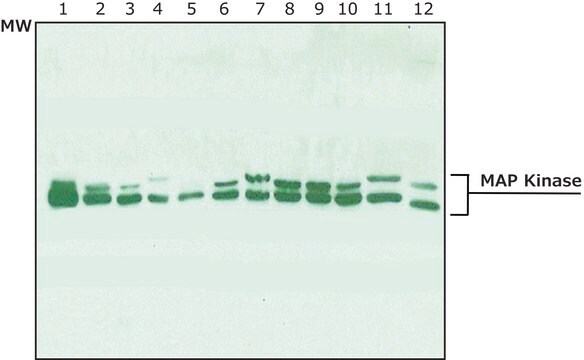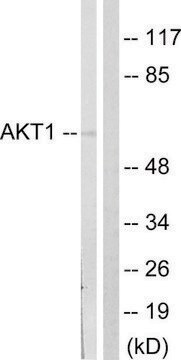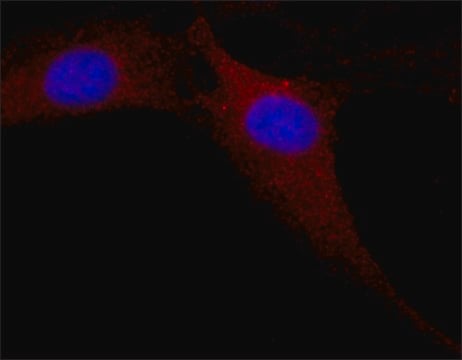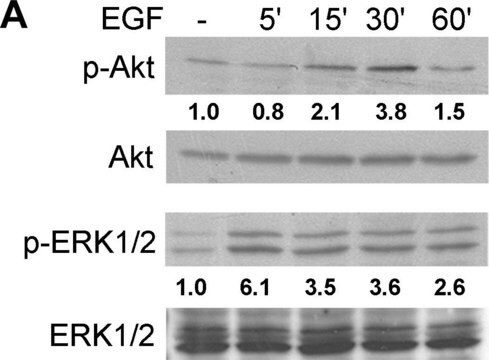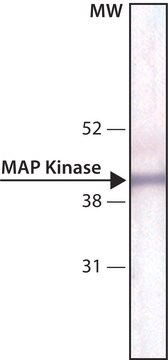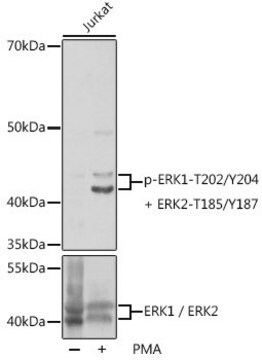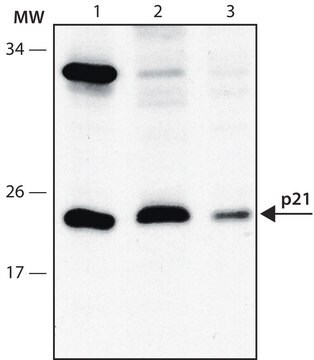E7028
Anti-phospho-ERK1 (pThr202/pTyr204) and ERK2 (pThr185/pTyr187) antibody produced in rabbit
affinity isolated antibody, buffered aqueous solution
Synonym(s):
Phospho ERK Antibody - Anti-phospho-ERK1 (pThr202/pTyr204) and ERK2 (pThr185/pTyr187) antibody produced in rabbit, Phospho Erk Antibody, Anti-MAPK
About This Item
Recommended Products
biological source
rabbit
Quality Level
conjugate
unconjugated
antibody form
affinity isolated antibody
antibody product type
primary antibodies
clone
polyclonal
form
buffered aqueous solution
species reactivity
rat, chicken, human, mouse
technique(s)
immunocytochemistry: suitable
western blot: suitable
UniProt accession no.
shipped in
wet ice
storage temp.
−20°C
Gene Information
human ... MAPK3(5595)
mouse ... Mapk3(26417)
rat ... Mapk3(50689)
General description
This antibody recognises endogenous active forms of ERK1/2 (44/42 kDa) in human, mouse, rat and chick embryo.
Specificity
Immunogen
Application
Physical form
Disclaimer
Not finding the right product?
Try our Product Selector Tool.
Storage Class Code
10 - Combustible liquids
WGK
WGK 1
Flash Point(F)
Not applicable
Flash Point(C)
Not applicable
Regulatory Listings
Regulatory Listings are mainly provided for chemical products. Only limited information can be provided here for non-chemical products. No entry means none of the components are listed. It is the user’s obligation to ensure the safe and legal use of the product.
JAN Code
E7028-1VL:
E7028-1VL-PW:
E7028-BULK:
E7028-VAR:
Certificates of Analysis (COA)
Search for Certificates of Analysis (COA) by entering the products Lot/Batch Number. Lot and Batch Numbers can be found on a product’s label following the words ‘Lot’ or ‘Batch’.
Already Own This Product?
Find documentation for the products that you have recently purchased in the Document Library.
Customers Also Viewed
Our team of scientists has experience in all areas of research including Life Science, Material Science, Chemical Synthesis, Chromatography, Analytical and many others.
Contact Technical Service